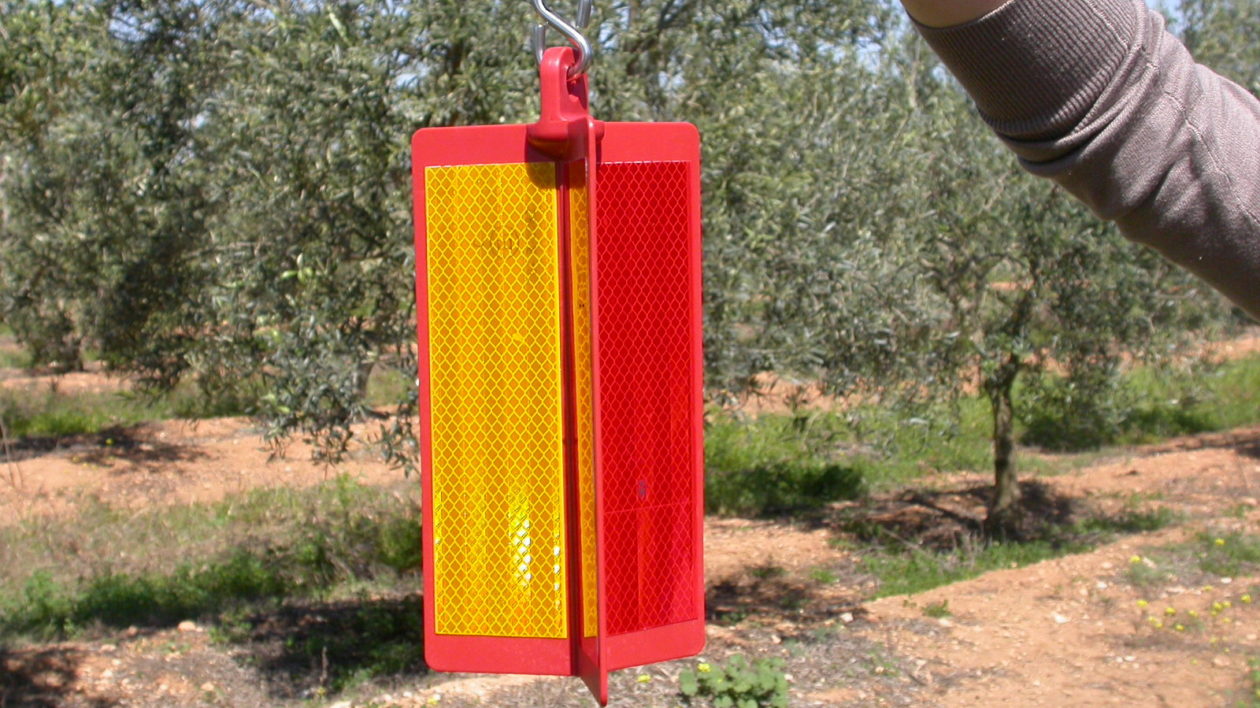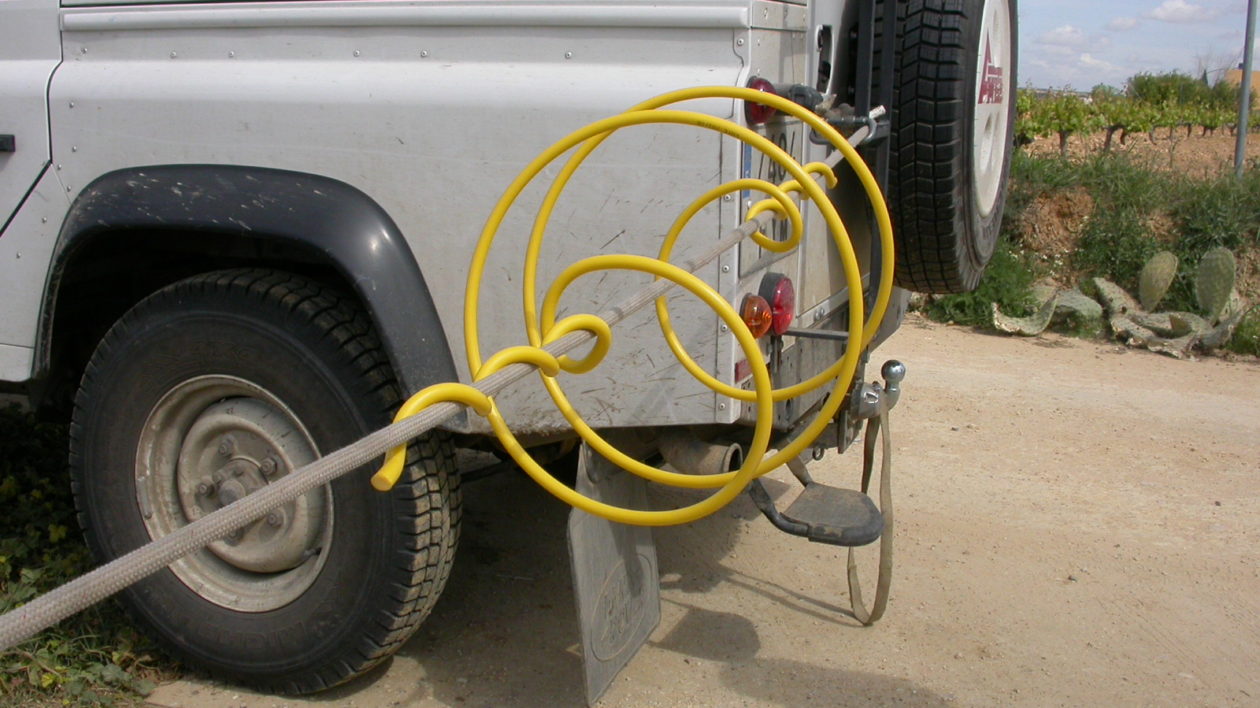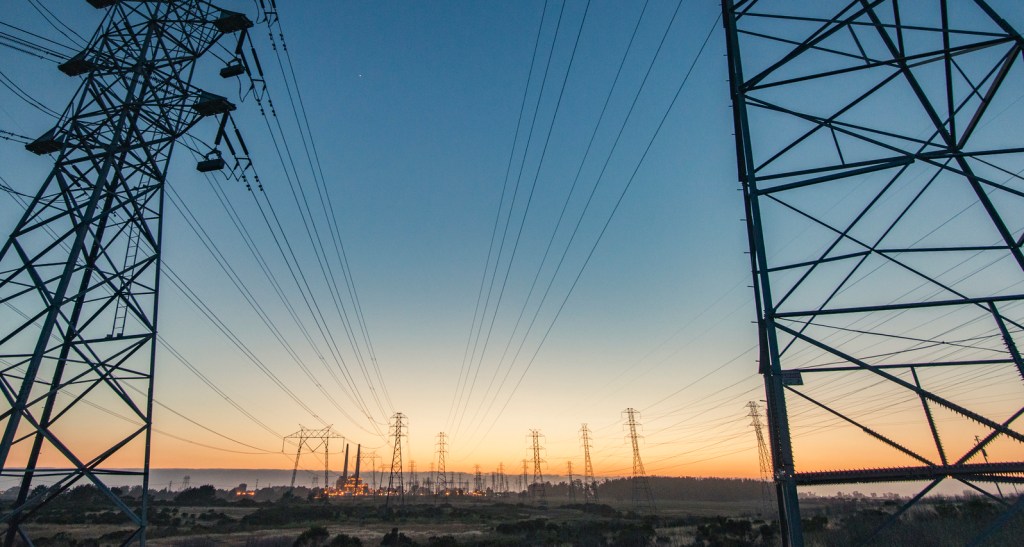Millions of birds are killed every year in collisions with power lines. Scientists have discovered that installing suspended, rotating devices known as ”flappers” on power lines is the most effective way to reduce bird deaths.
The Gist
Scientists from Oregon State University and Spain’s Doñana Biological Station compared three different types of bird deterrents, called flight diverters, which are attached to power lines to make them more visible to birds.
The most commonly used type are spirals made from PVC piping in bright colors, like orange or yellow. The researchers installed these two diverters and a third type—a newer, flapper model with three orange and red polypropylene blades with reflective stickers—along different sections of power lines in southern Spain. Field workers then patrolled the area under the line for 40 days, documenting a total of 131 killed birds from 32 species.
Their results show that the section of power lines with the flapper diverters had an average death rate 70 percent lower compared to sections where no diverters were used. The more commonly used PVC spirals did reduce bird mortality, compared to nothing at all, but were far less effective than the flappers. These results were published recently in Global Ecology and Conservation.

The Big Picture
Glass buildings and wind turbines are often cited as major dangers to birds, but power lines are a more ubiquitous threat. Even in rural areas, they’re one of the most common forms of human infrastructure. It’s estimated that more than 65 million kilometers of medium–high voltage power lines are currently in use around the world, and that number is increasing each year.
Power lines can prove deadly for birds, either via electrocution or fatal collision with wires or infrastructure. Raptors are particularly at risk of electrocution, as they frequently hunt from or nest on utility poles and have large wingspans that can connect energized conductors to form a circuit.
Scientists estimate that more than 1 billion birds are killed by power lines each year, including an estimated 175 million birds each year in the United States. “Factors that determine the mortality risk of collision are the orientation of the line according to bird passages, and the habitat that the span is crossing,” says Virginia Morandini, an author on the research and a scientist at Oregon State University. “Variables like bird species or the vegetation in the area will increase or decrease the risk of a collision much more than the density of birds.”

The Takeaway
Conservationists and utility companies have used flight diverters for years, in an attempt to reduce bird mortality and costs associated with wildlife-caused power outages. PVC spirals are the most commonly used type today, but upgrading to the new flapper model, developed in 2008 by a Spanish company, could significantly decrease bird mortality.
Regulations mandating flight diverter use vary around the world. In the United States, both the Endangered Species Act and the Migratory Bird Treaty Act include penalties for “take” (including injury or death) of migratory species and birds of prey, unless permits are granted sanctioning some bird mortality. The Fish and Wildlife Service and utility companies worked together to publish best-practice guidelines to protect birds from power infrastructure. “But unfortunately, the use of flight diverters is much more based on suggestions than on regulations,” says Morandini.
Even so, the knowledge that flapper flight diverters significantly reduce avian mortality is an important step towards reducing the impact of human infrastructures on wildlife. “A world where humans and wildlife coexist in better terms is still possible,” says Morandini. “In order to achieve this, the collaboration between private companies and applied research toward conservation is crucial.”




Excellent information.
It’s great that there are people out there, that respect and consider wildlife enough to keep trying and make better products to save wildlife. I wonder how widespread these are used in the U.S. and elsewhere?